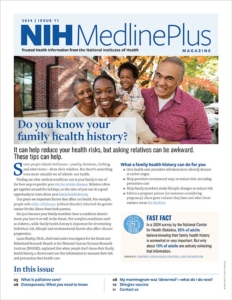
Transcript:
Hello and welcome. I am Dr George Lundberg and this is At Large at Medscape.
Back on March 24, I published Gaslighting the Medical Literature as a wake-up rant for Medscape authors and readers who may not have been fully informed about the revolting phenomenon of predatory publishing, sometimes known as pseudo-journals. At that time, I noted that the World Association of Medical Editors (WAME) was “working on definitive recommendations about what poor authors and editors may do to protect themselves.”
Drs Christine Laine and Margaret Winker have now published the WAME statement in open access.[1] But before we get into the details, let’s examine how medical journals are funded. Let’s follow the money.
For many people who work at legitimate medical journals, it is a labor of love. For the owners and publishers, however, it is more a labor of love for money. Roughly 13 sources of funding are available to support a medical journal. They are applied in different mixes by each publisher, depending on the goals of the journal’s owner. In no particular order, these sources are:
- Paid subscriptions, by individuals or libraries
- Member dues
- Recycled member dues
- Tabloid or banner advertising or pop-ups
- Classified advertising
- Sponsorships in various forms
- Government grants or ownership
- Foundation grants or ownership
- The owner itself, as a loss leader, for research, prestige, or marketing value
- Sale of reprints
- Fees for journal-based CME
- Author fees, paid by author, granting agency, or employer
- Bulk purchases for free distribution
What governs author, editor, publisher, owner, and advertiser behavior? The International Committee of Medical Journal Editors (ICMJE), WAME, the Committee on Publication Ethics (COPE), and the Council of Science Editors (CSE) all provide some guidance for publication, but primarily it is the personal morality of the editor-in-chief, the ethical integrity of the owners, and the demonstrated success of the business model that govern the behavior of these stakeholders.
The purpose of predatory journals is solely to make money for the owners from author fees. To maximize profit, costs are kept low by not hiring staff to perform manuscript evaluation, external pre-publication peer review, clinical and copy editing, quality assurance, editorial board activities, letters to the editor, corrections, retractions, archiving, authorship verification, and to manage conflicts of interest. In short, they eschew most of the processes in place that “legitimate” journals use to meet scholarly publishing standards.
How an Author Can Protect Against Predatory Publishers
- Be very leery of emails from unknown sources that invite manuscript submission and promise rapid publication for a fee.
- Check out (the now defunct but archived) Beall’s list of suspect open-access publishers and journals, 2010-2017: 1155 predatory publishers and 1294 predatory journals.
- Browse the Directory of Open Access Journals (DOAJ) for journals believed to be authentic: 9456 journals from 128 countries.
- Use the “Think. Check. Submit.” checklist.
- Look for a street mailing address for the publisher, and even a telephone number.
- Contact the editor-in-chief for a one-on-one exchange for sensible validation.
- Contact some listed member of the editorial board to assess legitimacy.
- Be sure your academic institution evaluates quality as well as quantity of articles published in its appointment and promotion process.
- Do not permit your name to be listed as a member of an editorial board unless you have verified the legitimacy of the publication.
- Study your field. Three emergency medicine physicians reported that 45% of 55 open-access journals in their field were likely predatory.[2] This research should be replicated in all fields.
For the full, up-to-date story on this topic from “the horse’s mouth,” read Jeffrey Beall’s fresh account of his experiences from 2008 to 2017.[3] Beall himself opines that the medical publishing industry is in such dire straits, brought about by the “pay to publish” collusion between authors who wish to be published and publishers happy to take their money, that it is in danger of collapsing.
I have worked full-time in medical publishing since 1982. I have never worked for a publication that required author fees. My initial reaction to the notion of author fees was, “Aha! A medical vanity press! You pay me a little, I will publish, but with high standards. You pay me more, I will publish…whatever you want.” This slope got slippery around 2010; scholarly publishing is now in free fall.
That is my opinion. I am Dr George Lundberg, at large at Medscape.
Medscape Internal Medicine © 2017
Cite this: WAME vs Predatory Publishing – Medscape – Jul 25, 2017.

 Paul G. Rogers, Chairman of the Board of Directors of the Friends of the National Library of Medicine (FNLM), died October 13 while recuperating from surgery for lung cancer. As a Congressman from Florida for 24 years, and in so many endeavors in the years since he retired from Congress in 1979, Mr. Rogers maintained a career-long commitment to public health and biomedical research. As an expression of the priority he felt should be given to health research, the man widely known as “Mr. Health” often said, “Without research, there is no hope!”
Paul G. Rogers, Chairman of the Board of Directors of the Friends of the National Library of Medicine (FNLM), died October 13 while recuperating from surgery for lung cancer. As a Congressman from Florida for 24 years, and in so many endeavors in the years since he retired from Congress in 1979, Mr. Rogers maintained a career-long commitment to public health and biomedical research. As an expression of the priority he felt should be given to health research, the man widely known as “Mr. Health” often said, “Without research, there is no hope!”
